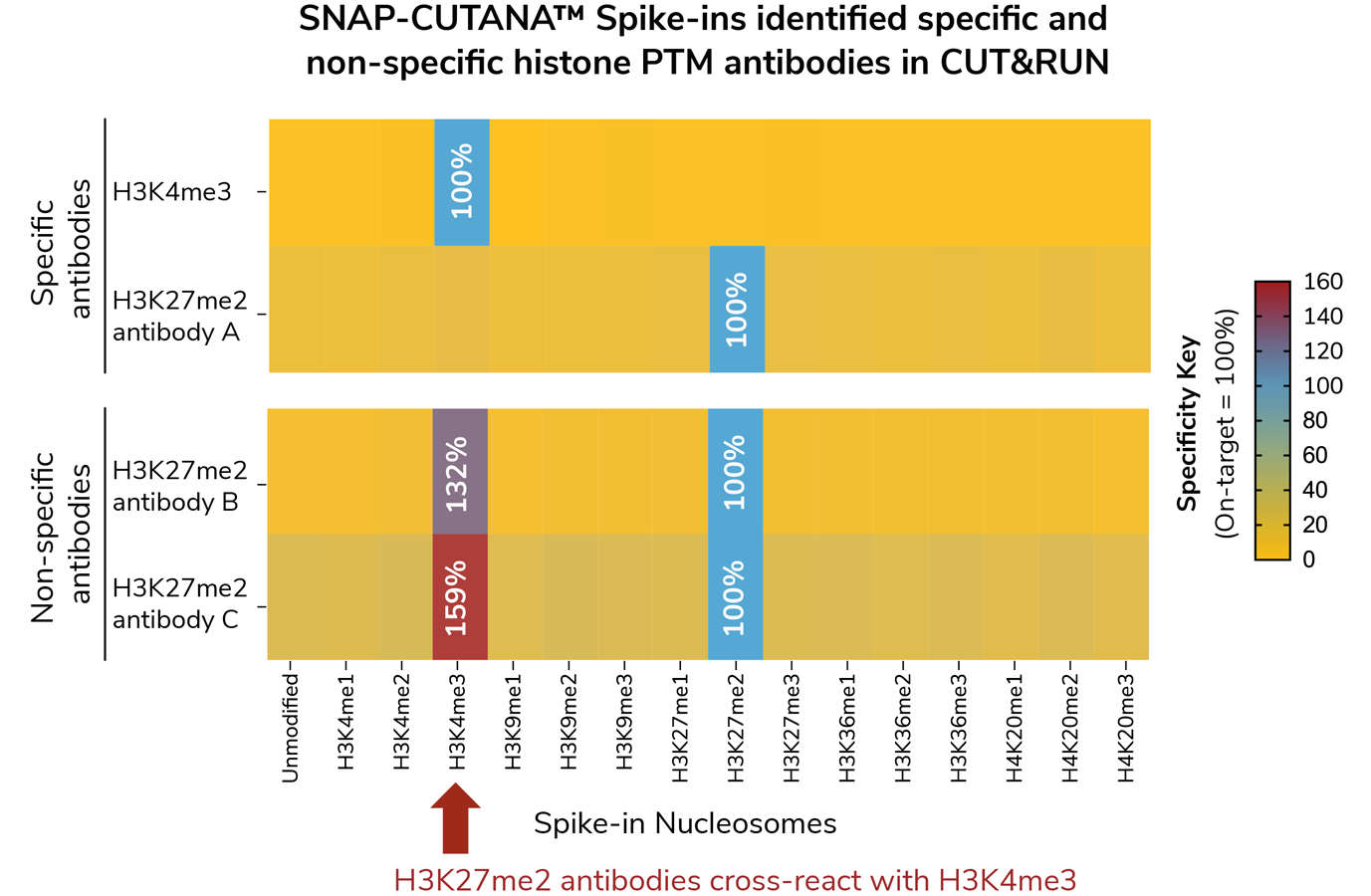All-in-one solution for quantitative chromatin profiling
Epigenomic mapping is a powerful and widely used approach for studying chromatin regulation. However, current controls are ill-defined and unable to provide accurate readouts of assay success, antibody specificity, or be used for quantitative normalization. The true quality of epigenomics data is often obscured, which misleads scientists and wastes valuable resources. EpiCypher has created SNAP Spike-in Controls to address these problems. With one easy step, you can control your assay and be confident in your data:
- Direct, quantitative readout of experimental success
- In-assay validation of antibody specificity
- Robust normalization for cross-sample comparisons
- Compatible with CUT&RUN, CUT&Tag and ChIP-seq assays
Have Questions?
We’re here to help. Click below and a member of our team will get back to you shortly!
Request More InfoDon't question your results -- Save time and money with SNAP Spike-ins
The Advantages of SNAP Spike-ins
Interested in SNAP Spike-in Controls?
SNAP-CUTANA™ Spike-in Controls
Reliable nucleosome spike-in controls for quantitative CUT&RUN and CUT&Tag assays.
SNAP-ChIP® Spike-in Control Panel
Defined controls for superior ChIP. We offer panels for a variety of histone PTMs, including lysine methylation and acylation.
Featured Publications
1. Shah et al. Examining the roles of H3K4 methylation states with systematically characterized antibodies. Mol Cell. 72, 162 - 177 (2018). (PMID: 30244833)
In this study, SNAP-ChIP Spike-in technology revealed that many widely cited, “ChIP-grade” antibodies exhibit poor binding specificity and pull-down efficiency, and demonstrated that histone peptide arrays do not accurately predict antibody performance.
2. Lam et al. Cell-type-specific genomics reveals histone modification dynamics in mammalian meiosis. Nat. Commun. 10, 3821 (2019). (PMID: 31444359)
SNAP-ChIP K-MetStat spike-ins were used to normalize ChIP-seq data and uncover epigenetic changes associated with meiosis. In choosing an antibody for their study, Lam and colleagues recapitulated findings from Shah et al., in which widely cited H3K4me3 antibody produced biologically distinct findings compared to a highly specific EpiCypher SNAP-ChIP Certified H3K4me3 antibody.
3. Grzybowski et al. Native internally calibrated chromatin immunoprecipitation for quantitative studies of histone post - translational modifications. Nat. Protoc. 14, 3275-3302 (2019). (PMID: 31723301)
This study includes detailed methods for the use of barcoded recombinant nucleosomes as spike-in controls for ChIP normalization, and are directly applicable to the use of SNAP-ChIP spike-ins.
4. Tay et al. Hdac3 is an epigenetic inhibitor of the cytotoxicity program in CD8 T cells. J. Exp. Med. 217, e20191453 (2020). (PMID: 32374402)
Reads from the DNA barcodes on SNAP-ChIP K-AcylStat spike-ins were used to normalize H3K27ac ChIP-seq data and elucidate H3K27ac changes after HDAC3 knockout in CD8+ T cells.
5. Shirane et al. NSD1-deposited H3K36me2 directs de novo methylation in the mouse male germline and counteracts Polycomb-associated silencing. Nature Genetics 52, 1088-1098 (2020). (PMID: 32929285)
Here, the Lorincz lab used SNAP-ChIP Certified Antibodies and Spike-in Controls to characterize the histone lysine methylation landscape in mouse male germline cells. These studies revealed a novel role for the H3K36 methyltransferase NSD1 in driving sexually dimorphic DNA methylation patterns in the germline.
To see a full list of publications, click here.









